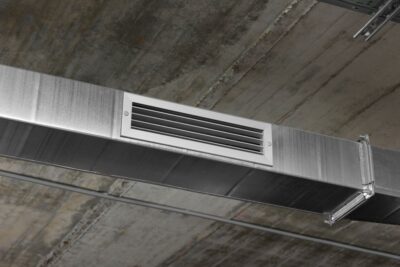Salt damp is a persistent issue that Australian homeowners must contend with. This is a silent problem that creeps up on uninformed people and eventually surfaces, causing a devastating impact. Families are often left frustrated, having to deal with paint peels, wall blisters, and weakened timber floors, which can lead to expensive repairs and a drop in property values. This type of moisture-induced damage disrupts the overall property’s aesthetics, as it threatens the building’s stability.
A lack of proper preventive measures results in rapidly increasing repair costs, disrupting your budget and overall comfort. One of the most effective ways to prevent this cycle is through sub floor ventilation, as recommended by experts.
Why Homes Need Sub-Floor Ventilation for Salt Damp Protection
Sub-floor moisture is the ideal breeding ground for salt damp to the surface. The restricted airflow, lingering humidity, and crystallisation of salts start to crumble the integrity of the walls. It is essential to have a comprehensive understanding of how this devastating process initiates and how under-floor ventilation safeguards homeowners can prevent widespread damage.
What Causes Salt Damp in Australian Homes
So, how does a salt damp appear? A common question for Australian homeowners. Salt damp develops when salt-bearing groundwater starts to rise through the porous building materials. Evaporation traps the salt crystals within stone, plaster, or brickwork, turning them weak. Such an issue can cause severe damage, in addition to any cosmetic blemishes. However, the property owners frequently mistake it for a stain. Understanding salt damp offers Australian homeowners insight into the approaches required to identify signs before extensive structural deterioration occurs.
Salt damp creates noticeable scars mimicking flaking paint and powdery residue. However, the real danger lies within the materials. Prevention of such damage relies strongly on airflow and underfloor ventilation, disrupting the damaging cycle by eliminating any trapped moisture.
How Moisture Builds Beneath Homes
Dampness formed under the property’s surfaces due to inadequate drainage, leaking plumbing, or heavy rainfall absorbed by the soil. Australian soils hold water for a prolonged time, turning the houses in the area at high risk. Lack of proper ventilation allows the trapped water to linger, seeping through the walls and flooring.
According to reports, the Australian Government has highlighted the impact of soil moisture and its role in causing structural damage throughout the country, particularly in areas with high clay content. Fresh airflow ensures that moisture is not trapped for long, promoting salt crystallisation. A sound under floor ventilation system promotes air circulation, keeping the sub-floor dry and safe for holding the structural materials together.
Why Lack of Ventilation Makes Salt Damp Worse
The entrapped humidity under the property speeds up salt migration into the timber and plaster. Once the real signs of damage appear, the harm is already done and proves to be expensive. In this scenario, the cost to fix salt damp proves to be significantly higher than the price of implementing a preventative system.
The damaging process prevents air circulation, keeping the flooring and walls protected and dry. Studies on the behaviour of salt and moisture in building materials confirm this further, with institutions such as the CSIRO reinforcing the importance of preventive measures for homes in Australia.
Ventilation Options That Offer Lasting Protection
The typical solutions often range from natural vents that power fans, creating a consistent airflow under the house. Vent placements remain important, ensuring increased circulation and numerous systems integrate damp-proof membranes and improvements to drainage. In combination, they form a significant part of the rising damp solutions, providing shielding properties against enduring moisture penetration.
The experts help customise suggestions based on local soil conditions, home designs, and climatic factors. After installation, these systems silently safeguard homes in Australia, offering a highly reliable and effective mode of protection.
Spotting Early Warning Signs of Salt Damp
Homeowners can spot salt damp in the form of noticeable white deposits, musty smells, peeling paint, and timber decay. Effective foundation repair signs and fixtures serve as indicators to ensure that inspections occur immediately, preventing any significant deterioration. Failing to take proper preventive measures sooner can make repairs costly and challenging.
Experts can identify and confirm moisture levels under the home while suggesting highly targeted solutions. Addressing such warning signs sooner helps to keep the repairs manageable, cost-effective, and less damaging.
Health and Lifestyle Improvements Through Ventilation
Mould growth is a persistent issue that occurs under floors, and it quickly escalates into a damaging problem due to moist conditions. Ventilation can proactively help eliminate the dampness on which mould relies, creating safer and fresher living conditions. Families in Australia enjoy a healthier environment with fewer respiratory issues after the adequate installation of ventilation.
The enhanced airflow improves daily living by removing odours and safeguarding the finishes. Ventilation should be included in effective home renovation strategies to ensure that homes remain appealing, strong, and a healthier space to live.
Why Preventive Ventilation Delivers Long-Term Value
Salt damp discourages potential buyers since it undermines the property value. Homes without noticeable signs of damage attract strong market interest and maintain higher valuations. Investing in proper ventilation needs less operating costs but delivers the integrity of the property for decades.
The preventative systems are less overwhelming compared to the increasing damage. Families that act promptly can enjoy peace of mind, strong structural resilience, and better financial savings.
Conclusion
Salt damp stands as one of the most damaging yet preventable issues in Australian homes. The issue surfaces gradually, eating off the walls, finishes, and floors, demanding costly repairs. Prevention is easier, affordable, and less overwhelming than remediation. Safeguarding homes with consistent airflow underfloor is the best measure. Therefore, sub-floor ventilation is the best way to prevent salt damp before it takes a destructive shape!












